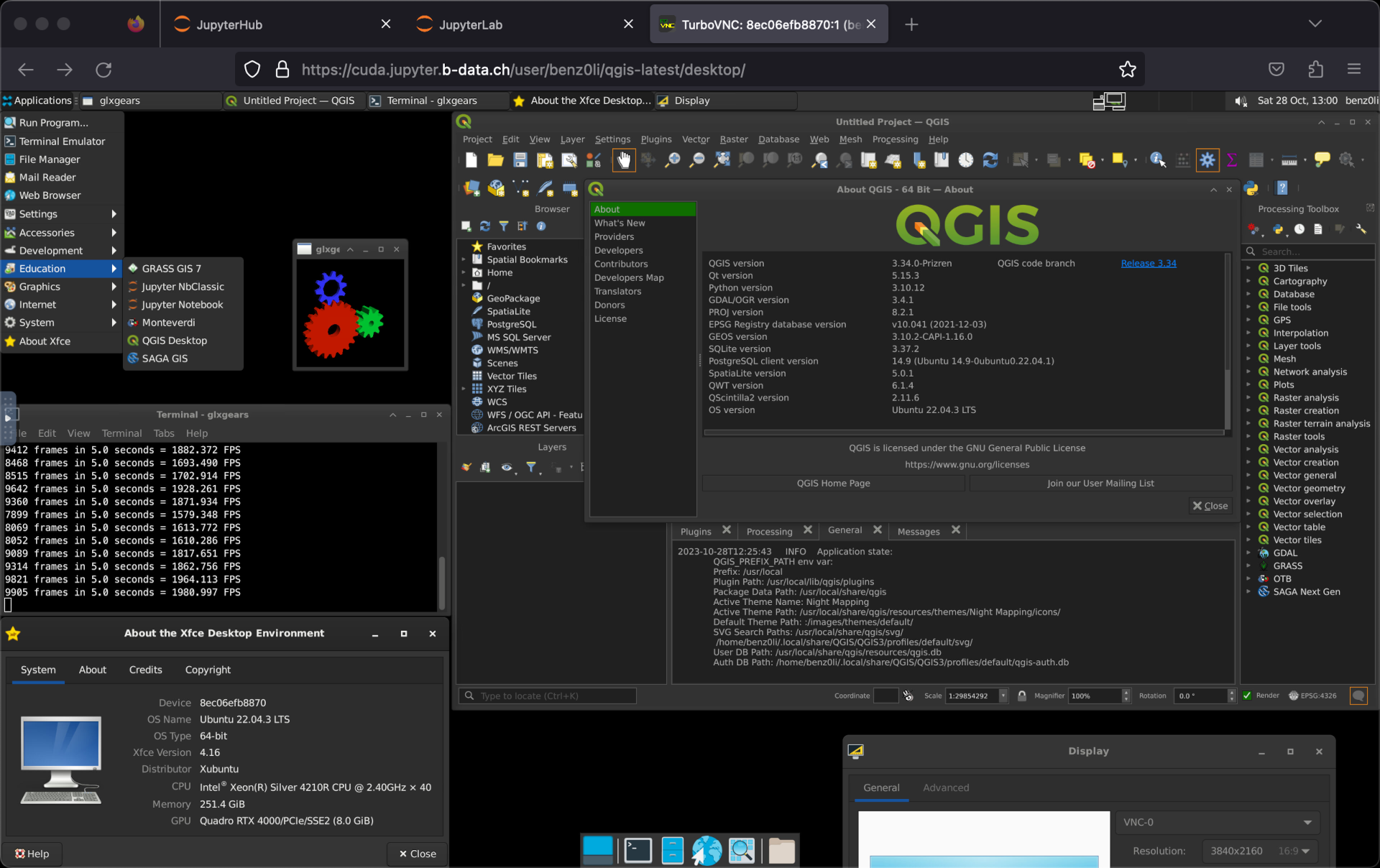Feedback regarding image size (uncompressed): glcr.b-data.ch/jupyterlab/r/tidyverse (3.18 GB) vs rocker/tidyverse (2.38GB):
glcr.b-data.ch/jupyterlab/r/tidyverse is 800 MB bigger because
- code-server is bigger than RStudio Server OSE[^1]
- there is JupyterLab (incl. dependencies) installed
- some R packages have been moved up the build chain
[^1]: There are many Code extensions pre-installed.

As discussed with @benz0li, we could use the
b-datastack throughout, with more consistency and good R/Python support. First we would need to think about similarities/differences and pros/cons, leaving this as an open question, I'm a bit out of my depth, so any advice / PRs welcome : )